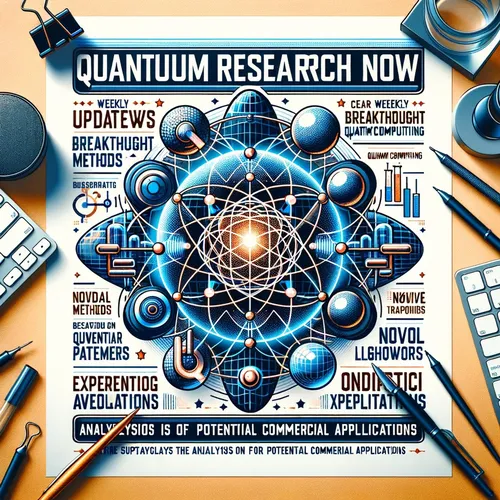Quantum Art's 200-Ion Leap: Scaling the Quantum Superhighway
- Author
- Quiet. Please
- Published
- Wed 30 Jul 2025
- Episode Link
- https://www.spreaker.com/episode/quantum-art-s-200-ion-leap-scaling-the-quantum-superhighway--67189903
This is your Quantum Research Now podcast.
This is Leo, the Learning Enhanced Operator, coming to you from a frost-laced quantum lab, surrounded by gently humming cryogenic fridges and racks of spinning lasers. Picture this: hundreds of ions suspended in choreography, like ballet dancers frozen mid-leap, hovering in diamond clarity at temperatures just barely above absolute zero. I live in these liminal spaces, where today’s big headlines shape tomorrow’s technology.
A wave of excitement surged through the quantum world this morning, as Quantum Art made headlines with a jaw-dropping demonstration—stabilizing a 200-ion chain in their industry-grade trapped-ion quantum computing system. Now, for those of you who might not dream in Hilbert space as I do, this is akin to tuning a 200-piece orchestra where each instrument is so delicate that even the faintest draft could send the whole ensemble into chaos. Yet, Quantum Art’s team, led by Dr. Tal David and Amit Ben-Kish, managed to coax these ions into perfect, stable alignment—a feat that most thought wouldn’t be seen outside of meticulous simulations for years.
Why is this so dramatic? In quantum computing, *scaling up* is the biggest mountain we face. Most trapped-ion systems, like those from IonQ or Honeywell, cap out at 30 to 50 ions before instability turns their delicate “crystals” into spaghetti. Quantum Art’s 200-ion breakthrough is a foundational leap. Imagine each ion as a wisp of data, able to be in multiple states at once—superposition, entangled, pulsating with uncertainty—and all interconnected through invisible, mathematical threads. This is what gives quantum computers their surreal power: not just more, but exponentially richer forms of computation.
Let me offer an analogy grounded in recent events. Think of classical computers as single-lane highways—efficient, orderly, but limited by traffic. Quantum computers, when scaled, are superhighways woven of transparent tubes where cars drive not only side by side, but also through each other and, for moments, in multiple places at once. Today, Quantum Art extended that superhighway from a few lanes to hundreds, paving the way for future highways thousands of “cars” wide.
This matters outside the lab. As nations—and even cryptocurrency foundations—scramble to quantum-proof their security, today’s 200-ion achievement is more than a technical stunt; it’s validation that quantum architectures can truly scale. With the Montage system’s commercial debut imminent, and their next-gen Perspective processor aiming for a 1,000-qubit milestone by 2027, we’re on the edge of utility-scale quantum computing.
The world is changing. Data centers are planning for hybrid classical-quantum systems. Financial systems, medicine, and logistics—all stand to be rewritten by tools that see paths even nature hides. Today’s news from Quantum Art is, quite literally, a signal from the quantum future.
Thanks for joining me on Quantum Research Now. If quantum has left you with burning questions, send them my way: [email protected]. Subscribe to Quantum Research Now, and remember, this has been a Quiet Please Production. For more, visit quietplease.ai. Stay curious—because in quantum, tomorrow appears at the speed of uncertainty.
For more http://www.quietplease.ai
Get the best deals https://amzn.to/3ODvOta
